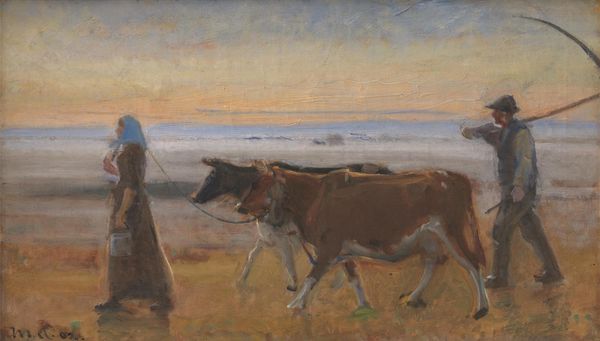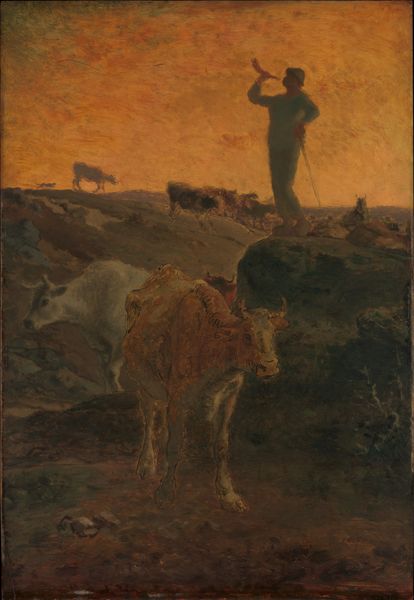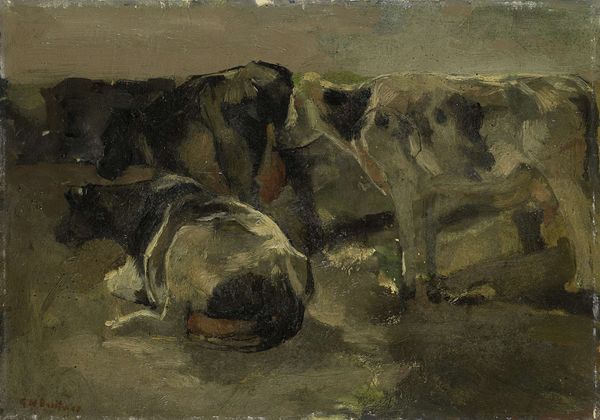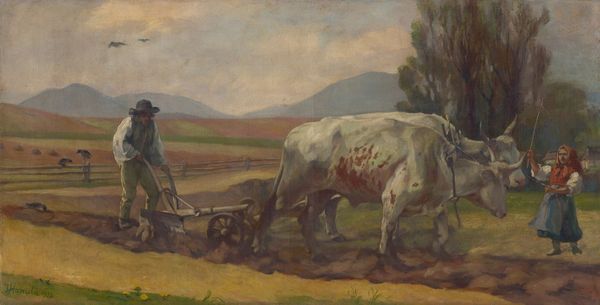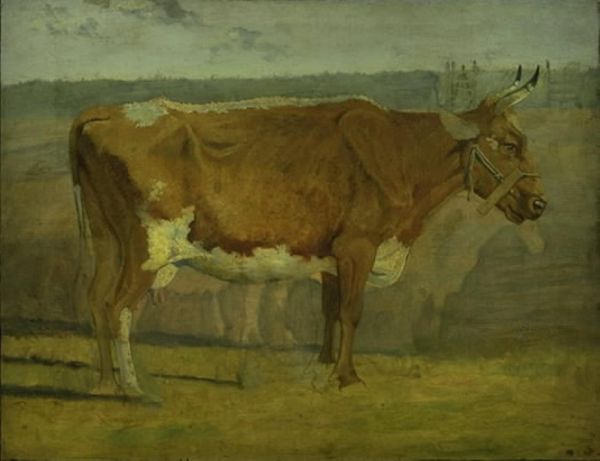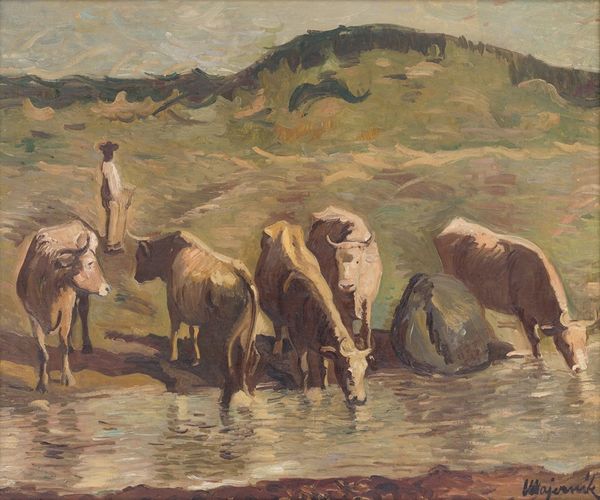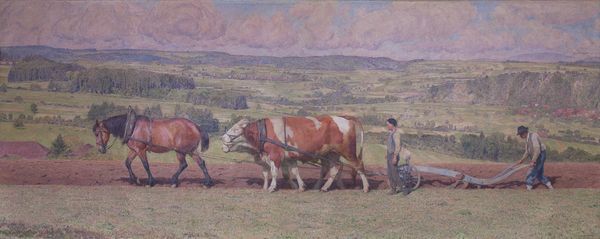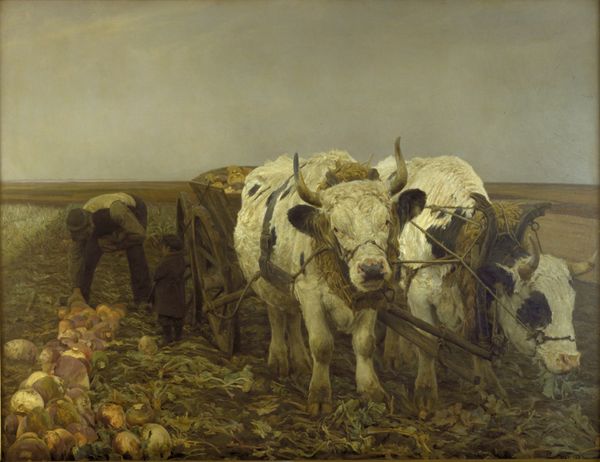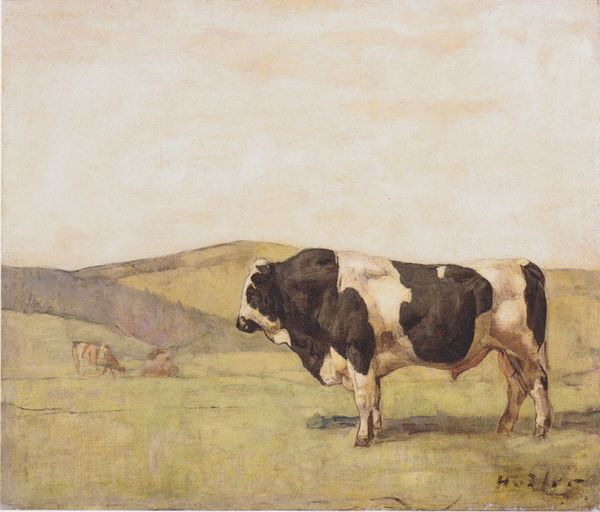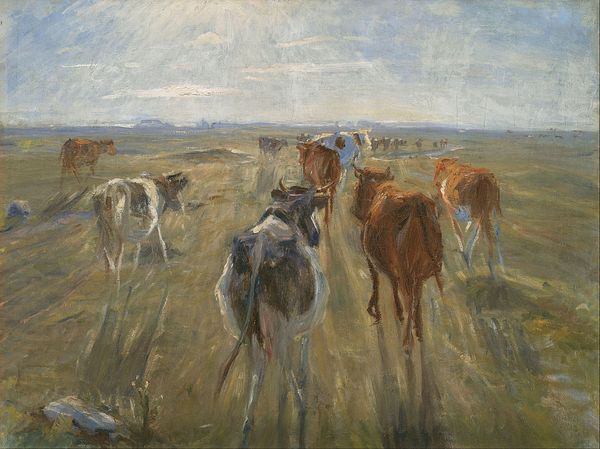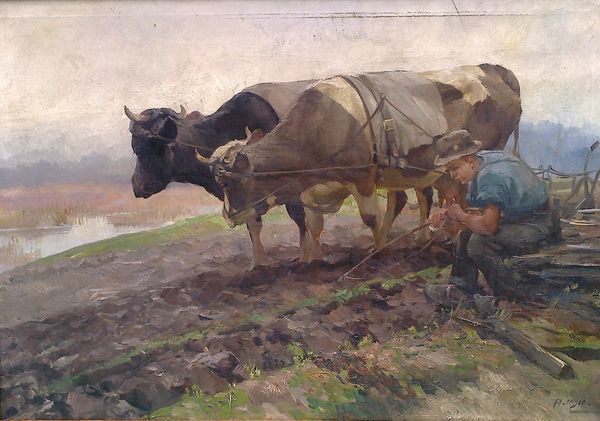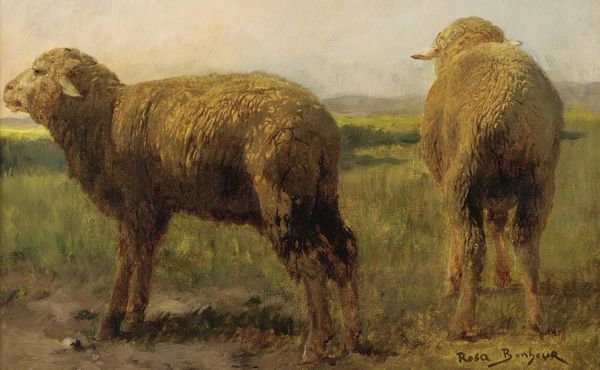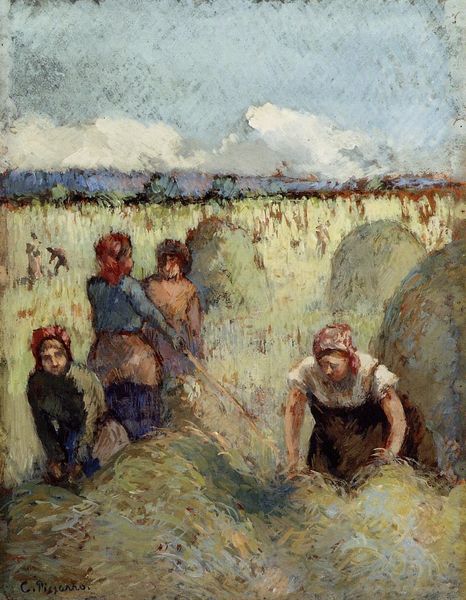
plein-air, oil-paint, impasto
#
plein-air
#
oil-paint
#
landscape
#
oil painting
#
impasto
#
genre-painting
#
realism
Dimensions: height 32 cm, width 45.1 cm, thickness 1.0 cm, depth 8.0 cm
Copyright: Rijks Museum: Open Domain
Curator: Standing before us is Willem van Konijnenburg's "Plowing Peasant," created around 1905. It's an oil painting rendered in an almost palpable impasto style. Editor: It feels heavy, doesn't it? Visually, emotionally...that density of paint mirrors the arduous nature of the labor depicted. The limited palette emphasizes that feeling, almost oppressive. Curator: Absolutely. Konijnenburg was deeply engaged with depicting the lives and labors of the working class. The materials themselves become a commentary on the weight of agricultural work, literally building up the image with thick layers of paint, referencing the artist working outside en plein-air. Editor: The composition is also key to interpreting that labor. The human figure, though large, is rendered indistinct, almost blending with the soil. This compositional choice emphasizes the integration and dependence on manual toil rather than individuality. I notice the chain seems about to break on the peasant, he appears downtrodden, looking like he could fall apart with any more struggle. Curator: Consider too, the social context. Early 20th century, industrialization on the rise, traditional agricultural ways of life beginning to fade. Konijnenburg's choice to focus on this subject highlights a changing societal landscape and a profession under pressure, a commentary on disappearing skills in an ever changing industrialized world. Editor: And how interesting is it that the painter chose impasto— such an immediate, physical technique for capturing that transformation. I do find it compelling how the limited colors reinforce the impression of being connected with the land. It conveys a feeling of harmony and peace despite what is implied as back breaking labor. Curator: True, but consider the physicality, the act of plowing itself as physical labor and the impact on both the laborer and animal involved. Even the canvas surface, likely pre-primed, signals the commodification of art production within this shifting context. It acknowledges that even artistic labor has become part of a larger capitalist framework. Editor: Seeing the work this way emphasizes how technique itself carries a historical dimension, reminding us of not just labor as a genre, but the impact that the work being done had on humanity at large. Curator: Indeed, "Plowing Peasant" is more than just an image; it's a statement on production, societal structures, and the dignity of the people tied to land. Editor: Precisely; it makes one consider what work one must put in, just to truly understand something's value, which, in this painting's case, feels immeasurable.
Comments
No comments
Be the first to comment and join the conversation on the ultimate creative platform.
